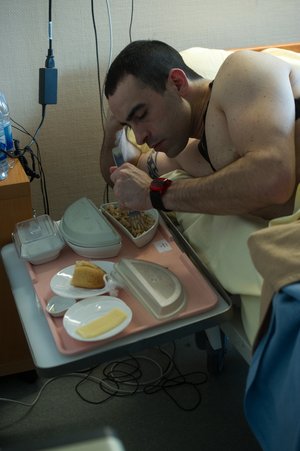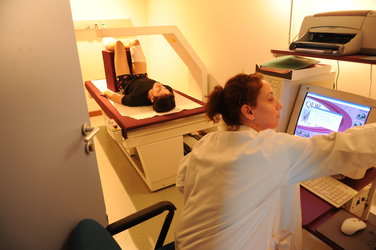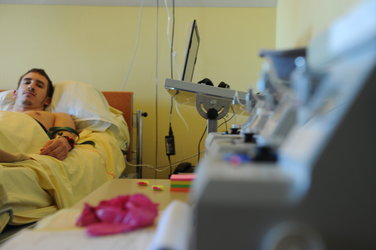

Going to bed for space
Volunteers are going to bed to help human spaceflight research. This ‘bedrest participant’ is performing a neuroscience experiment at the Medes Space Clinic in Toulouse, France. Developed with France’s space agency CNES, this protocol investigates if – and how – gravity affects hand–eye coordination.
Bedrest studies are a low-cost method of studying the effects of weightlessness on the human body. Participants spend up to 60 days in bed with the head tilted 6° below horizontal. By monitoring changes and learning why they occur, researchers learn and develop solutions for problems faced by astronauts in space as well as bedridden patients on Earth.
This experiment is being run on bedrest volunteers spending two months in bed with at least one shoulder in contact with the bed at all times. Researchers want to understand how the brain accomplishes reach and grasp tasks and whether new strategies develop to compensate for the downward tilt.
Equipped with a virtual reality headset, the subjects react to scenarios requiring them to reach and grasp for a object while motion sensors record their movements.
The assumption is that on Earth, in addition to visual cues, the brain uses gravity as a reference frame for coordinating hand movement. How then does the brain adapt to altered states of gravity or even the lack of it? Answers to this question will allow researchers to better understand the physiology behind complex hand–eye coordination and to shed light on how to treat patients with vertigo, spatial disorientation and other vestibular disorders.





